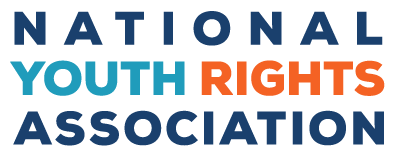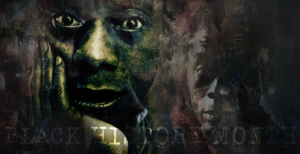In President Clinton’s State of the Union address on February 4, 1997 he asked congress to “mount a full-scale assault on juvenile crime.” To follow up on his speech President Clinton produced “The President’s Anti-Gang and Youth Violence Strategy.” This report outlined President Clinton’s ideas for combating juvenile crime. While a long document, the report’s overview is indicative of the bias evident throughout the entire report. The highest elected office in our nation is not immune from the anti-youth hysteria that has gripped this nation. In direct response to highly publicized school shooting tragedies President Clinton created his plan for dealing with youth violence. Even this official government document is fraught with errors and premature conclusions. This paper will attempt to expose these biases and counter the misleading factual statements made by President Clinton in the overview to “The President’s Anti-Gang and Youth Violence Strategy.”
The overview first provides a background of gang and youth violence. Here the President tries to sell you information structured to set you up to agree with his proposals later on. A discerning reader however can see through this ploy and realize the fallacy of his facts. The first paragraph states: “While overall crime rates are dropping, young people are increasingly the perpetrators and victims of some of society’s most violent crimes. Indeed, until recently, the rate of youth violence has climbed dramatically. For example, between 1984 and 1993, the rate of homicides committed by juveniles skyrocketed 169%.” In the first paragraph Clinton does, however, partially redeem himself by mentioning that the trend he cited has been changing recently, but it is buried in the paragraph and the recipients of this report no doubt will pass over the “until recently.” Besides this fluke this statement mostly uses strong language to give the reader the impression that youth are out of control and juvenile crime is bad and getting worse. In reaction to the skyrocketing juvenile homicide rate Clinton contends that there will be a “doubling of juvenile arrests for violent crimes by the year 2010.” He makes this prediction and then in the very next paragraph admits, “Over the past two years, violence — and especially murder — committed by young people has declined.” Clinton then includes facts to prove that crime rates are dropping, clearly refuting his points about growing juvenile crime and the awaiting epidemic. Even though Clinton admits that crime rates among youth have fallen he tries to take credit for it and use those statistics to push his crime initiatives.
“Building Upon a Proven Record” is where the President lists nine supposedly specific steps he has taken to combat youth crime in his past four years in office. Of those nine points only three actually involved action taken by the Presidency, the others described President Clinton’s “support” for existing policies and programs in the country. Thereby attempting to take credit for policies that his administration had no hand in creating or implementing. This shady politicking is indicative of the Clinton administration and most anti-youth advocates in congress and in all levels of government, stirring up anti-youth propaganda for re-election purposes.
The next section in President Clinton’s overview is titled “Community Success Stories in Combating Youth Violence” Clinton highlights three cities in the country that have had success dealing with youth crime. Programs and history of Boston, Massachusetts; Salinas, California; and Jacksonville, Florida are included in this report These three examples contain many statistical tricks and side steps. One common tactic when creating bias in statistics is to change the subject or the topic of the statistics, rather than make them uniform, this is clearly evident in this section. “From 1984 to 1994, homicides jumped 200% in Salinas. Other crimes such as assault and robbery also increased over the same period.” First of all the crime mentioned here do not only include youth or juvenile crime but all crime. This is an easy trick used to make the reader perceive a larger problem than there really is It is entirely possible that youth homicide increased much less than 200% or perhaps even declined, but by changing the subject of the statistic Clinton can make you think of youth crime without ever having to say it directly. It is also mentioned that assault and robbery have increased, though it fails to mention by how much.
The next study of Jacksonville, Florida employs much the same tactics. “From 1991 to 1996, more than 80 juveniles died as a result of firearm-related incidents. In 1992 alone, 454 youths were arrested for aggravated assaults.” It mentions firearm-related incidents, not homicides. Firearm-related incidents includes a million different things, hunting accidents, suicides, household accidents, and since it lists the juveniles as the victims rather than the assailants who knows how many of those 80 were killed by adults. Also mentioned are the 454 youths arrested for aggravated assault, now switching to arrests rather than victims. Assault is vaguely classified and Franklin E. Zimring believes that “the willingness of police authorities to give greater priority to assaults has altered the classification of attacks across the board”(Zimring 46). Zimring believes that a change in how police deal with and classify assault is to blame for the large increase in aggravated assault by youth; no doubt the same reasons apply in Jacksonville. After describing some programs Jacksonville has implemented to combat the 80 firearm-related incidents Clinton provides statistics to prove their success. Although he chooses to use statistics related to murders committed by juveniles, clearly not the same statistics he used to open the Jacksonville example. Any good social scientist knows that if one intends to prove a direct correlation between two things one must use the same statistics before and after to prove it. It just does not make good scientific sense to use much different sets of numbers to prove the effectiveness of anti-crime programs, this is clearly and attempt by President Clinton to obscure the truth and push his agenda at all costs.
Further problems with the three examples are evident in the fact that they are only three examples, not included in the report are the many examples which no doubt refute these three cases and these three cities. Of course no paper can be expected to cite all similar incidents in the country, that would be too long, but the President made no attempt whatsoever to provide fair impartial statistics and conclusions. His purpose is to promote his programs and that bias is very apparent.
This report by President Clinton was written before the Columbine shooting, but was certainly in response to other school shootings that had happened earlier. These shootings create a sense of national crisis and politicians feel the need to respond immediately. Teen violence is certainly not a crisis, school shootings are rare incidents, and if they were publicized the same amount as adult shootings we would never have to worry about this manufactured teen violence epidemic. In a radio interview on 4/23/99 Mike A. Males, the author of “Framing Youth” and sociology instructor at the University of California, Irving, noted that “Twenty million teenagers are enrolled in 25,000 schools nationwide. Eight of those youths in six of those schools perpetrated the school killings of the last 18 months. Slaughter is not sweeping the younger generation, yet authorities relentlessly portray all “kids today” as somehow implicated in the madness of a few.” This bias that Males speaks of is the reason for this report by the President.
While President Clinton focuses on cracking down upon youth crime, what extra draconian measures is he taking to solve adult crime? Where are the adult curfews? What about drug testing? What about uniforms and everything else that President Clinton thinks will solve youth crime? He wouldn’t dare try anything that ludicrous to adults. Because adults vote, and such obvious violations of people’s rights would not be tolerated by the adult voting age population. Youth are an easy, defenseless scapegoat.
“When a 3-year-old Los Angeles girl was murdered in an apparent gang killing in September 1995, the press headlined the story and President Clinton rightly called a ‘day of mourning’ for child victims of street violence. When a 3-year-old Beverly Hills boy was murdered by his 37-year-old father three weeks later, the story drew little attention or politician outrage. When a national child abuse commission reported in April 1995 that 2,000 American children per year are murdered by their parents and caretakers, Clinton and other leaders didn’t bother to comment.” (Males 101)
Although this is an official report by the President it reads as nothing more than an advertisement for his policies. The facts are blatantly biased and misleading, this report’s language and false statistics no doubt influenced the votes of several members of congress. It is sad how politicians put their own thoughts and beliefs above the true facts. Rather than develop the best, most effective programs Clinton and most politicians just make the programs that they want. Often these laws cost youth their liberty and freedom, and since they won’t affect politician’s reelection chances it doesn’t matter.
Sources
- Males, Mike A. The Scapegoat Generation: America’s War on Adolescents. Monroe, Maine: Common Courage Press, 1996
- Zimring, Franklin E. American Youth Violence. New York: Oxford University Press, 1998






One Comment
Comments are closed.